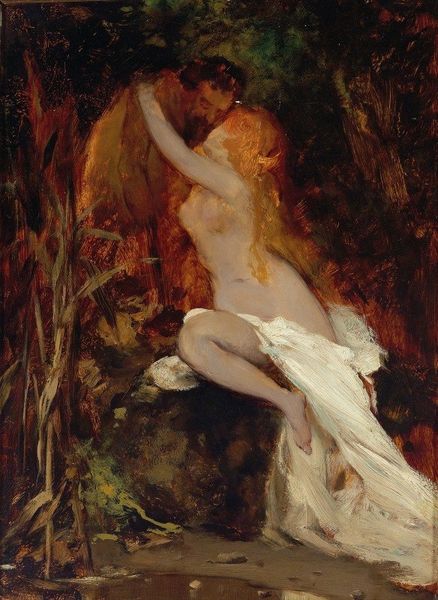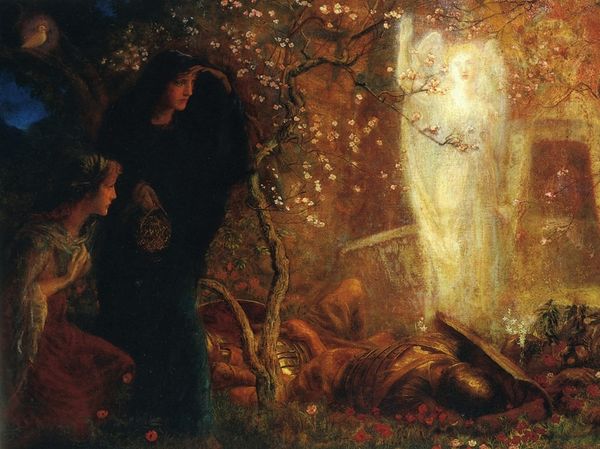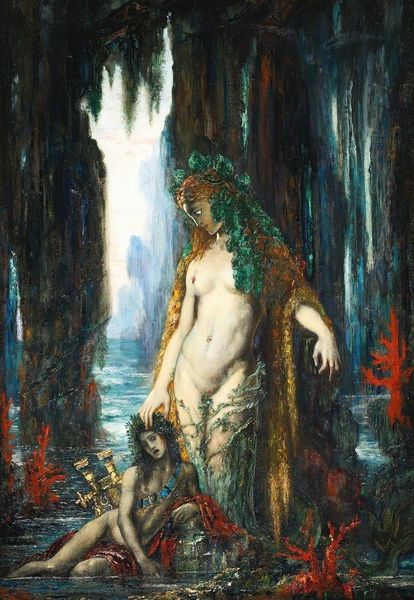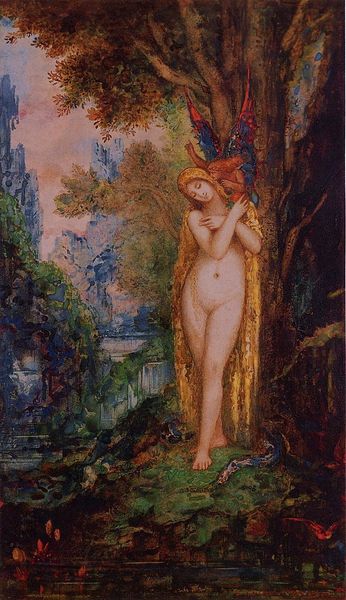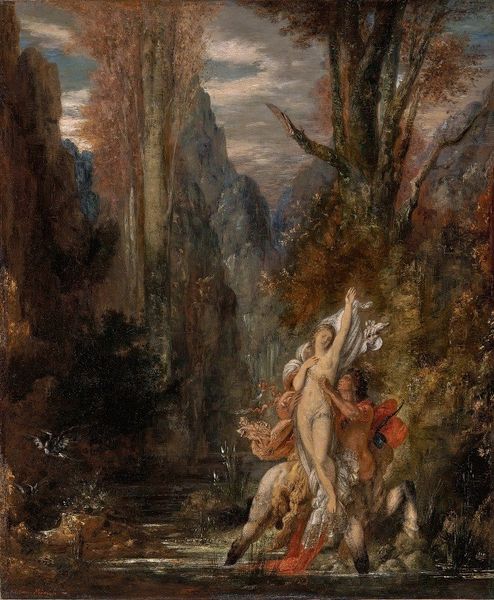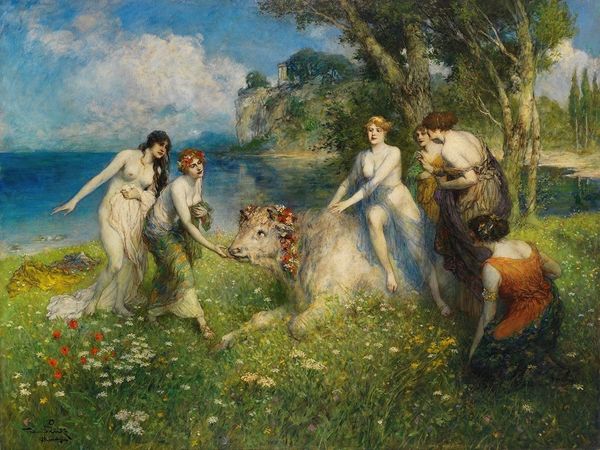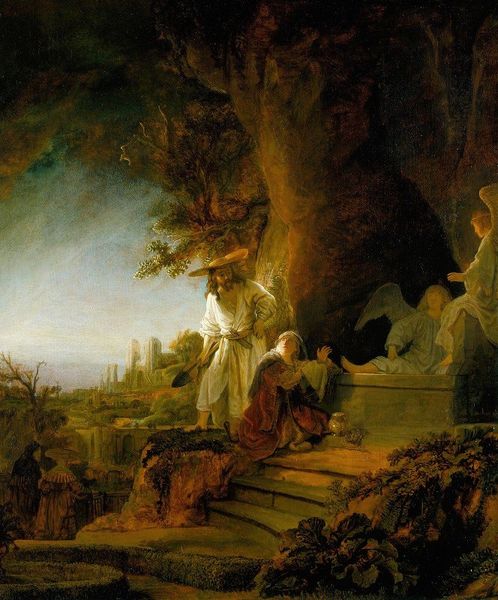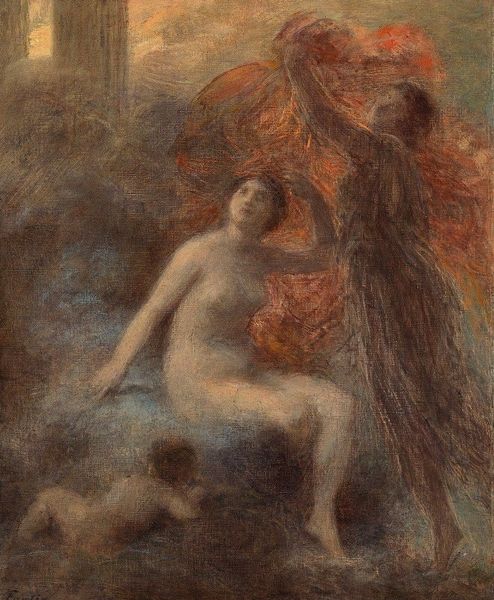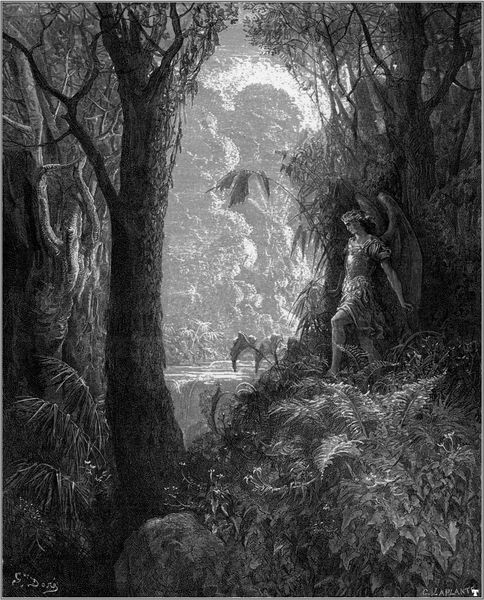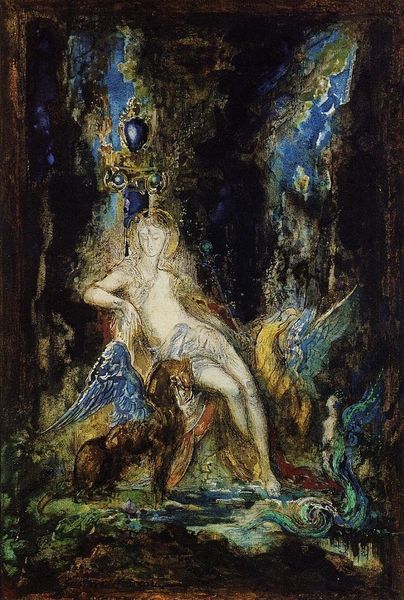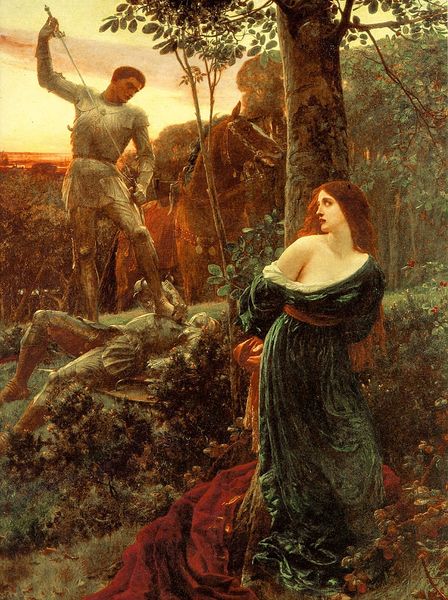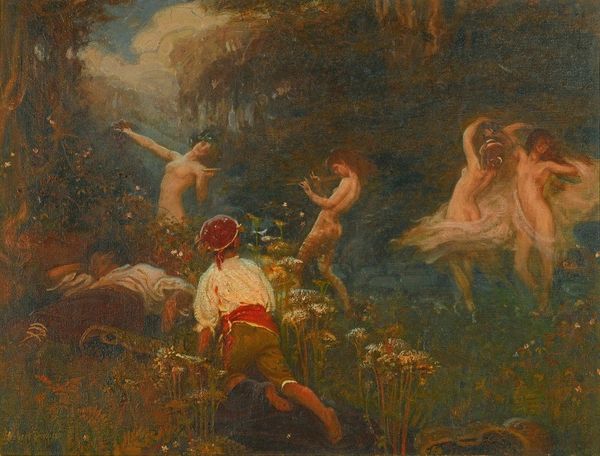
oil-paint
#
oil-paint
#
landscape
#
figuration
#
oil painting
#
roman-mythology
#
mythology
#
symbolism
#
history-painting
#
academic-art
#
nude
Dimensions: 51 x 26 cm
Copyright: Public domain
Curator: Gustave Moreau painted this rather dreamlike vision of "Pasiphae and the Bull" in 1880, rendered with oil on canvas. Editor: Immediately, I’m struck by the texture, that grainy almost unsettling quality that comes from layering oil in this particular way. It feels otherworldly, charged with suppressed violence. Curator: Moreau, deeply rooted in academic art, infused this mythological scene with layers of Symbolism that challenge conventional depictions. The use of oil paint certainly aids in rendering the mysterious elements found in this dark landscape. Editor: I agree, and thinking about how the art world itself functioned back then, his choices reflect the complex public reception of classical stories and nudes. The Royal Academy dictated a hierarchy of genres placing “history paintings” at the top. This influenced which types of stories Moreau would be able to bring to the Salon exhibitions. Curator: Absolutely. He was taking inspiration from classical mythology. The raw materials matter so much here, both literally with the paints and the canvas, and figuratively, as the choice of subject echoes a period where industry saw rapid material innovation. But his art really is so distinctive compared to his contemporaries. The narrative isn't straightforward. I’m more interested in the underlayers of the paint itself, for example the impasto he uses, to understand how that enhances this symbolic scene. Editor: Indeed, Moreau’s process involved intricate underdrawings that we no longer get to witness. While some of the underdrawings, drafts and sketches survive today in Museums in Paris, but the politics around which museums chose to display his paintings definitely reflect contemporary concerns with depictions of women. Curator: Yes! That brings us back to his use of oil. How the sheen of the oil creates highlights and shadows that really direct our eye toward Pasiphae herself. It forces the audience to encounter a range of perspectives on female agency. It’s such a direct choice in terms of engaging with and shaping public opinion about labor, social relations, even technology through the symbolism in this one painting. Editor: Thinking about Moreau's life in the context of contemporary views on morality makes you reflect on how a late 19th-century audience must have received an image that mixes nude women, and animal sexuality, with landscape painting! Thank you for this glimpse into his creative process and the social forces acting upon it. Curator: A pleasure. Exploring these connections deepens our understanding and really lets you engage with the rich complexity that Moreau created, both materially and conceptually.
Comments
No comments
Be the first to comment and join the conversation on the ultimate creative platform.
